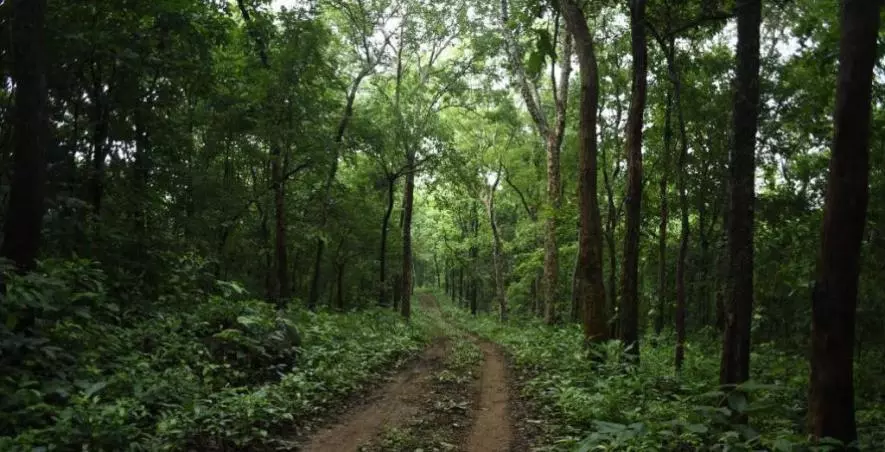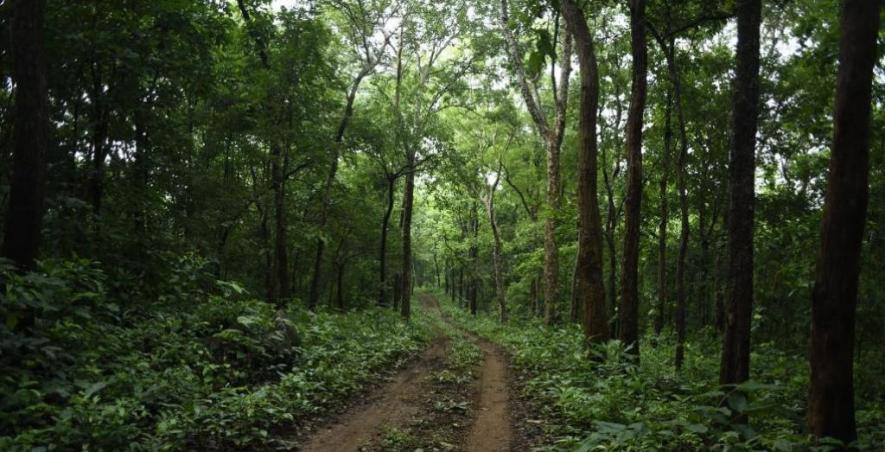
The India State of Forest Report (ISFR) – 2023, released on Saturday, also said India had achieved an additional carbon sink of 2.29 billion tonnes compared to 2005 levels.
As part of its climate plans or Nationally Determined Contributions (NDCs) to meet the Paris Agreement goals, the country has committed to creating an additional carbon sink of 2.5 to 3 billion tonnes through additional forest and tree cover by 2030.
According to the report, India experienced degradation of around 93,000 square kilometres of forests between 2011 and 2021.
Around 636.5 million tonnes of carbon can be sequestered through density upgradation in degraded areas, it said.
For ISFR – 2023, the government included bamboo and trees with a diameter of 5-10 centimetres at breast height in the tree cover estimates. It expanded the assessment to 751 districts compared to 636 in 2021.
Together, the forest and tree cover now stands at 8,27,357 (8.27 lakh) square kilometres or 25.17 per cent of India’s geographical area.
The forest cover alone increased by a mere 156.47 square kilometres from 2021 to 2023, reaching 7,15,343 (7.15 lakh) square kilometres (21.76 per cent of geographical area). The tree cover increased by 1,289 square kilometres and now constitutes 3.41 per cent of the country’s geographical area, the report said.
According to the Forest Survey of India (FSI), forest cover refers to all land that has a tree canopy density of more than 10 per cent and spans over an area of one hectare or more, regardless of the type of ownership or legal status.
This includes natural forests as well as man-made plantations, orchards and tree patches in urban and rural areas that meet the size and canopy density criteria.
Tree cover is defined as patches of trees and isolated trees outside RFA that are less than one hectare.
Union Environment Minister Bhupender Yadav said the most positive finding of the report was that India hasd already created an additional carbon sink of 2.29 billion tonnes compared to 2005 levels.
India’s carbon stock in 2023 is estimated at 7,285.5 million tonnes, an increase of 81.5 million tonnes from 2021.
The fast-growing South Asian country is estimated to have 31.71 billion tonnes of carbon stock in forest and tree cover by 2030.
FSI Director General Anoop Singh said bamboo cover had also been estimated and included in the tree cover.
India’s total bamboo-bearing area is now estimated at 1,54,670 (1.54 lakh) square kilometres, an increase of 5,227 square kilometres from 2021.
Chhattisgarh recorded the highest increase in forest and tree cover, with a gain of 683.62 square kilometres, followed by Uttar Pradesh (559.19 square kilometres), Odisha (558.57 square kilometres) and Rajasthan (394.46 square kilometres).
The largest declines were observed in Madhya Pradesh (612.41 square kilometres), Karnataka (459.36 sq kmsquare kilometres), Ladakh (159.26 square kilometres) and Nagaland (125.22 square kilometres).
Within the RFA, Mizoram showed the largest increase in forest cover, adding 192.92 square kilometres, followed by Odisha (118.17 sq kmsquare kilometres), Karnataka (93.14 square kilometres), West Bengal (64.79 square kilometres) and Jharkhand (52.72 square kilometres).
The steepest declines in forest cover inside RFA were recorded in Tripura (116.90 square kilometres), Telangana (105.87 square kilometres), Assam (86.66 square kilometres), Andhra Pradesh (83.47 square kilometres) and Gujarat (61.22 square kilometres).
Outside RFA, Gujarat saw the highest increase in forest cover, with a gain of 241.29 square kilometres, followed by Bihar (106.85 square kilometres), Kerala (95.19 square kilometres), Uttar Pradesh (79.27 square kilometres), and Assam (74.90 square kilometres).
The most significant losses outside RFA occurred in Madhya Pradesh (344.77 square kilometres), Rajasthan (110.65 square kilometres), Andhra Pradesh (55.19 square kilometres), Arunachal Pradesh (45.32 square kilometres) and Maharashtra (41.07 square kilometres).
The FSI also analysed forest cover changes in the ecologically fragile Western Ghats over the past decade and found an overall loss of 58.22 square kilometres.
In the region, the Nilgiris reported the steepest decline of 123 square kilometres. The mountain range, spread across Karnataka, Kerala and Tamil Nadu, is known for its popular tourist spots.
Devastating landslides earlier this year in Kerala’s Wayanad in the region killed hundreds of people. The Centre has been trying to grant legal protection to the ecologically fragile region since 2013 amid opposition from states.
The latest assessment shows an increase of 234.14 square kilometres in forest cover in the hill districts.
The report showed a decrease of 327.30 square kilometres in forest cover in the northeastern region.
The country’s total mangrove cover stands at 4,991.68 square kilometres, a net decrease of 7.43 square kilometres since 2021, according to the report.
Moderately dense forest and open forest categories saw declines of 1,043.23 square kilometres and 2,480.11 square kilometres, respectively, over the past decade, despite gains in very dense forest.
The report highlighted that more than 40,709 square kilometres of very dense forest and moderately dense forest within RFA degraded to open forest between 2011 and 2021.
The government also reported the degradation of 5,573 square kilometres of very dense forest, moderately dense forest, and open forest to scrub during this period. A total of 46,707 square kilometres of very dense forest, moderately dense forest, open forest, and scrub degraded to non-forest.
The FSI has been assessing forest cover since 1987 and tree cover since 2001.
The National Forest Policy, 1988, mandates that 33 per cent of the geographical area of India should be under forest or tree cover.
